Columbus Army Service Forces Depot
World War II
With the preparations for World War II, activity at the Depot increase greatly including railroad traffic. The original 281 acre site was augmented on its east side with an additional 295 acre purchase. This provided for additional buildings as well as outdoor storage for military vehicles. During WW II civilian employment reached a peak of 10,000. Photographs courtesy of Charles Morris, DSCC Multimedia Photographer except where noted.
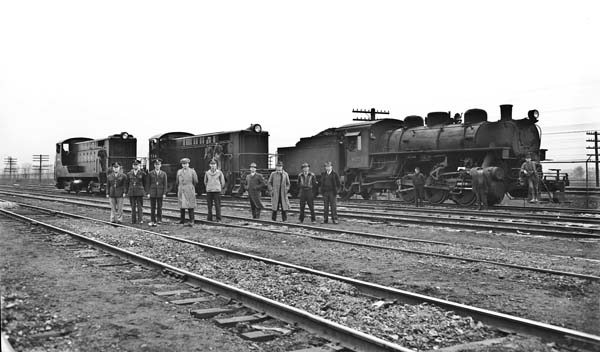
Click to enlarge
In the 1940s the site had multiple locomotives serving the Depot including this mix of diesels and steam locomotive No. 4039. It’s very likely that heavy repairs to the steam locomotives were contracted out to the Pennsylvania Railroad with its steam shops close by.The B&O/PRR mainline can be seen on the far side of the chain link fence behind the locomotives.
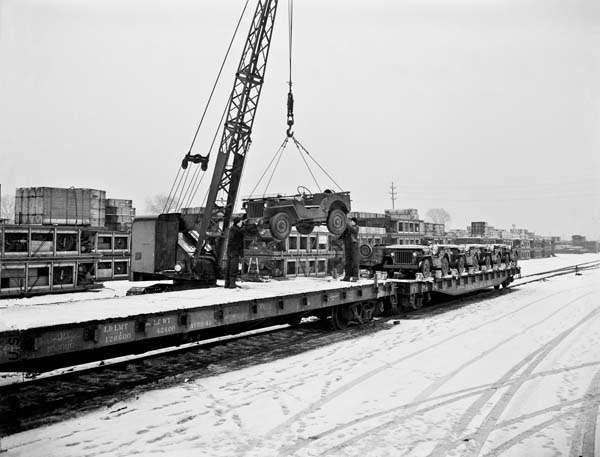
Click to enlarge
Jeeps are being loaded two abreast on flat cars for shipment in 1945. Boxed military supplies are stacked as far as the eye can see.
Click to enlarge
A 2 ½ ton, 6X6 amphibious truck, DUKW, or just plain “Duck”, is being loaded on a flat car for shipment in 1946.The Curtis-Wright aircraft factory is in the background.

Click to enlarge
The forces aligned against the allies would surely get a little discouraged looking at this line up of Ducks ready for shipment in October, 1944. The war has been going on for three years and still Columbus has large quanties of military supplies ready for shipment.Photo from Alex Campbell Collection.
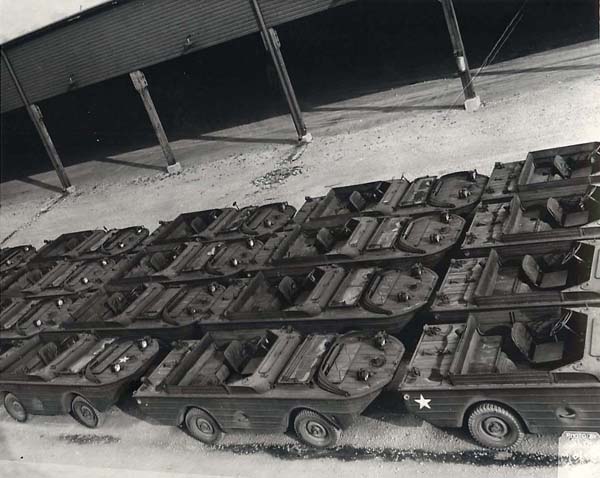
Click to enlarge
A variation on the 2 ½ ton Ducks were these amphibious Jeeps lined up on February, 1944, at the Army Depot.Photo from Alex Campbell Collection.
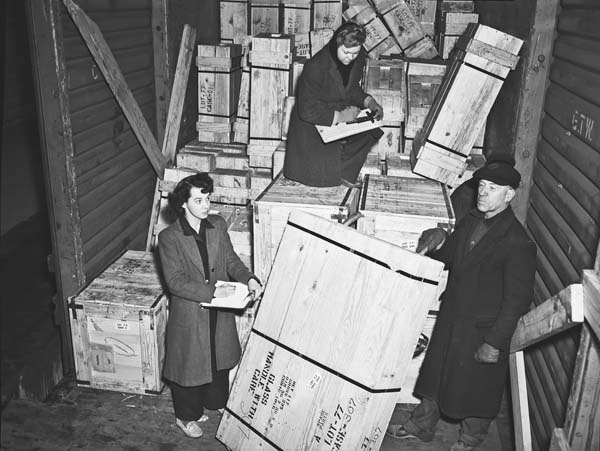
Click to enlarge
Clerks are preparing inventories in the day of paper records. Keeping track of inventory must have been a monumental job. Building shipping boxes was another big task. Photo taken 1943.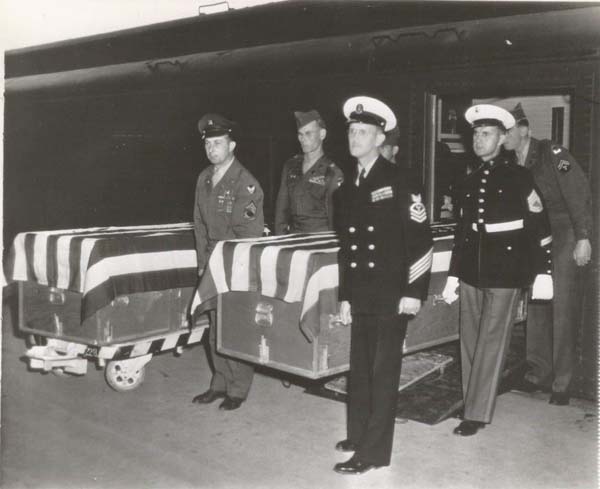
Click to enlarge
One somber job handled by the Depot was the repatriation of deceased military members from Europe and the Pacific. The caskets were loaded on specially prepared baggage cars at the ports and brought to Columbus to be returned to their home town.Photo from Alex Campbell Collection.